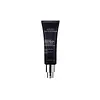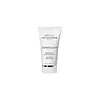What's inside
What's inside
 Key Ingredients
Key Ingredients

 Benefits
Benefits

 Concerns
Concerns

 Ingredients Side-by-side
Ingredients Side-by-side

Water
Skin ConditioningPropanediol
SolventCorn Starch Modified
AbsorbentGlycerin
HumectantPropylheptyl Caprylate
EmollientAmmonium Acryloyldimethyltaurate/Vp Copolymer
C10-18 Triglycerides
EmollientOryzanol
Skin ConditioningSorbitan Sesquioleate
EmulsifyingZinc Gluconate
Skin ConditioningAcrylates/C10-30 Alkyl Acrylate Crosspolymer
Emulsion StabilisingSodium Citrate
BufferingSalicylic Acid
MaskingParfum
MaskingPropolis Extract
Skin ConditioningPropylene Glycol
HumectantPentaerythrityl Tetra-Di-T-Butyl Hydroxyhydrocinnamate
AntioxidantAdenosine
Skin ConditioningAminoethanesulfinic Acid
AntioxidantCaprylyl Glycol
EmollientCarnosine
Skin ConditioningTocopherol
AntioxidantDisodium Adenosine Triphosphate
Skin ConditioningLaminaria Digitata Extract
Skin ProtectingAcetyl Hexapeptide-8
HumectantWater, Propanediol, Corn Starch Modified, Glycerin, Propylheptyl Caprylate, Ammonium Acryloyldimethyltaurate/Vp Copolymer, C10-18 Triglycerides, Oryzanol, Sorbitan Sesquioleate, Zinc Gluconate, Acrylates/C10-30 Alkyl Acrylate Crosspolymer, Sodium Citrate, Salicylic Acid, Parfum, Propolis Extract, Propylene Glycol, Pentaerythrityl Tetra-Di-T-Butyl Hydroxyhydrocinnamate, Adenosine, Aminoethanesulfinic Acid, Caprylyl Glycol, Carnosine, Tocopherol, Disodium Adenosine Triphosphate, Laminaria Digitata Extract, Acetyl Hexapeptide-8
Water
Skin ConditioningPropylene Glycol Stearate Se
EmulsifyingDisodium Laureth Sulfosuccinate
CleansingButylene Glycol
HumectantCetyl Alcohol
EmollientLaureth-2
CleansingC12-14 Pareth-3
EmulsifyingSodium Lauroyl Oat Amino Acids
CleansingParfum
MaskingFructooligosaccharides
HumectantChlorphenesin
AntimicrobialDisodium EDTA
Phenoxyethanol
PreservativeGlyceryl Oleate
EmollientSodium Benzoate
MaskingPotassium Sorbate
PreservativePropylene Glycol
HumectantGlycerin
HumectantLaureth-3
EmulsifyingLauryl Glucoside
CleansingPeumus Boldus Leaf Extract
MaskingPentylene Glycol
Skin ConditioningCarnosine
Skin Conditioning1,2-Hexanediol
Skin ConditioningCaprylyl Glycol
EmollientAlgae Extract
EmollientDisodium Adenosine Triphosphate
Skin ConditioningEthylhexylglycerin
Skin ConditioningXanthan Gum
EmulsifyingSodium Hydroxide
BufferingLecithin
EmollientAscorbyl Palmitate
AntioxidantTocopherol
AntioxidantHydrogenated Palm Glycerides Citrate
EmollientWater, Propylene Glycol Stearate Se, Disodium Laureth Sulfosuccinate, Butylene Glycol, Cetyl Alcohol, Laureth-2, C12-14 Pareth-3, Sodium Lauroyl Oat Amino Acids, Parfum, Fructooligosaccharides, Chlorphenesin, Disodium EDTA, Phenoxyethanol, Glyceryl Oleate, Sodium Benzoate, Potassium Sorbate, Propylene Glycol, Glycerin, Laureth-3, Lauryl Glucoside, Peumus Boldus Leaf Extract, Pentylene Glycol, Carnosine, 1,2-Hexanediol, Caprylyl Glycol, Algae Extract, Disodium Adenosine Triphosphate, Ethylhexylglycerin, Xanthan Gum, Sodium Hydroxide, Lecithin, Ascorbyl Palmitate, Tocopherol, Hydrogenated Palm Glycerides Citrate
 Reviews
Reviews

Ingredients Explained
These ingredients are found in both products.
Ingredients higher up in an ingredient list are typically present in a larger amount.
Caprylyl Glycol is a humectant and emollient, meaning it attracts and preserves moisture.
It is a common ingredient in many products, especially those designed to hydrate skin. The primary benefits are retaining moisture, skin softening, and promoting a healthy skin barrier.
Though Caprylyl Glycol is an alcohol derived from fatty acids, it is not the kind that can dry out skin.
This ingredient is also used as a preservative to extend the life of products. It has slight antimicrobial properties.
Learn more about Caprylyl GlycolCarnosine is a dipeptide made from two amino acids.
This ingredient helps:
Glycation is the process of sugars binding to and damaging proteins. Too much sugar in our skin can lead to damaged collagen, contributing to factors of aging.
Carnosine is water-soluble and is not able to travel deeper layers of skin. This leads to some doubt about whether it can boost collagen in skin, since collagen is located in the deeper layers of skin.
Fun fact: Carnosine can be naturally found in our muscles and brain.
Learn more about CarnosineWe don't have a description for Disodium Adenosine Triphosphate yet.
Glycerin is already naturally found in your skin. It helps moisturize and protect your skin.
A study from 2016 found glycerin to be more effective as a humectant than AHAs and hyaluronic acid.
As a humectant, it helps the skin stay hydrated by pulling moisture to your skin. The low molecular weight of glycerin allows it to pull moisture into the deeper layers of your skin.
Hydrated skin improves your skin barrier; Your skin barrier helps protect against irritants and bacteria.
Glycerin has also been found to have antimicrobial and antiviral properties. Due to these properties, glycerin is often used in wound and burn treatments.
In cosmetics, glycerin is usually derived from plants such as soybean or palm. However, it can also be sourced from animals, such as tallow or animal fat.
This ingredient is organic, colorless, odorless, and non-toxic.
Glycerin is the name for this ingredient in American English. British English uses Glycerol/Glycerine.
Learn more about GlycerinParfum is a catch-all term for an ingredient or more that is used to give a scent to products.
Also called "fragrance", this ingredient can be a blend of hundreds of chemicals or plant oils. This means every product with "fragrance" or "parfum" in the ingredients list is a different mixture.
For instance, Habanolide is a proprietary trade name for a specific aroma chemical. When used as a fragrance ingredient in cosmetics, most aroma chemicals fall under the broad labeling category of “FRAGRANCE” or “PARFUM” according to EU and US regulations.
The term 'parfum' or 'fragrance' is not regulated in many countries. In many cases, it is up to the brand to define this term.
For instance, many brands choose to label themselves as "fragrance-free" because they are not using synthetic fragrances. However, their products may still contain ingredients such as essential oils that are considered a fragrance by INCI standards.
One example is Calendula flower extract. Calendula is an essential oil that still imparts a scent or 'fragrance'.
Depending on the blend, the ingredients in the mixture can cause allergies and sensitivities on the skin. Some ingredients that are known EU allergens include linalool and citronellol.
Parfum can also be used to mask or cover an unpleasant scent.
The bottom line is: not all fragrances/parfum/ingredients are created equally. If you are worried about fragrances, we recommend taking a closer look at an ingredient. And of course, we always recommend speaking with a professional.
Learn more about ParfumPropylene Glycol is an odorless, colorless liquid. As a humectant, it helps skin retain moisture. It also aids in delivering active ingredients.
Another role of this ingredient is preventing a product from melting or freezing. Propylene glycol also adds antimicrobrial properties to a product, elongating product lifespan.
This ingredient is considered an organic alcohol and commonly added into both cosmetics and foods.
Those with sensitive skin or conditions may develop a rash when using this ingredient.
Learn more about Propylene GlycolTocopherol (also known as Vitamin E) is a common antioxidant used to help protect the skin from free-radicals and strengthen the skin barrier. It's also fat soluble - this means our skin is great at absorbing it.
Vitamin E also helps keep your natural skin lipids healthy. Your lipid skin barrier naturally consists of lipids, ceramides, and fatty acids. Vitamin E offers extra protection for your skin’s lipid barrier, keeping your skin healthy and nourished.
Another benefit is a bit of UV protection. Vitamin E helps reduce the damage caused by UVB rays. (It should not replace your sunscreen). Combining it with Vitamin C can decrease sunburned cells and hyperpigmentation after UV exposure.
You might have noticed Vitamin E + C often paired together. This is because it is great at stabilizing Vitamin C. Using the two together helps increase the effectiveness of both ingredients.
There are often claims that Vitamin E can reduce/prevent scarring, but these claims haven't been confirmed by scientific research.
Learn more about TocopherolWater. It's the most common cosmetic ingredient of all. You'll usually see it at the top of ingredient lists, meaning that it makes up the largest part of the product.
So why is it so popular? Water most often acts as a solvent - this means that it helps dissolve other ingredients into the formulation.
You'll also recognize water as that liquid we all need to stay alive. If you see this, drink a glass of water. Stay hydrated!
Learn more about Water